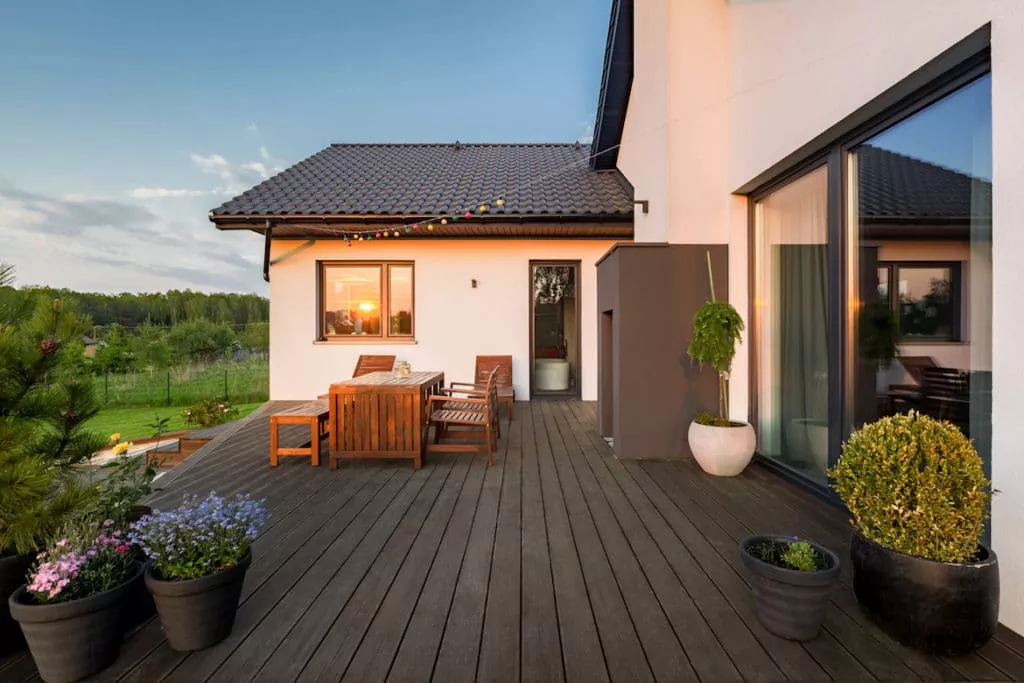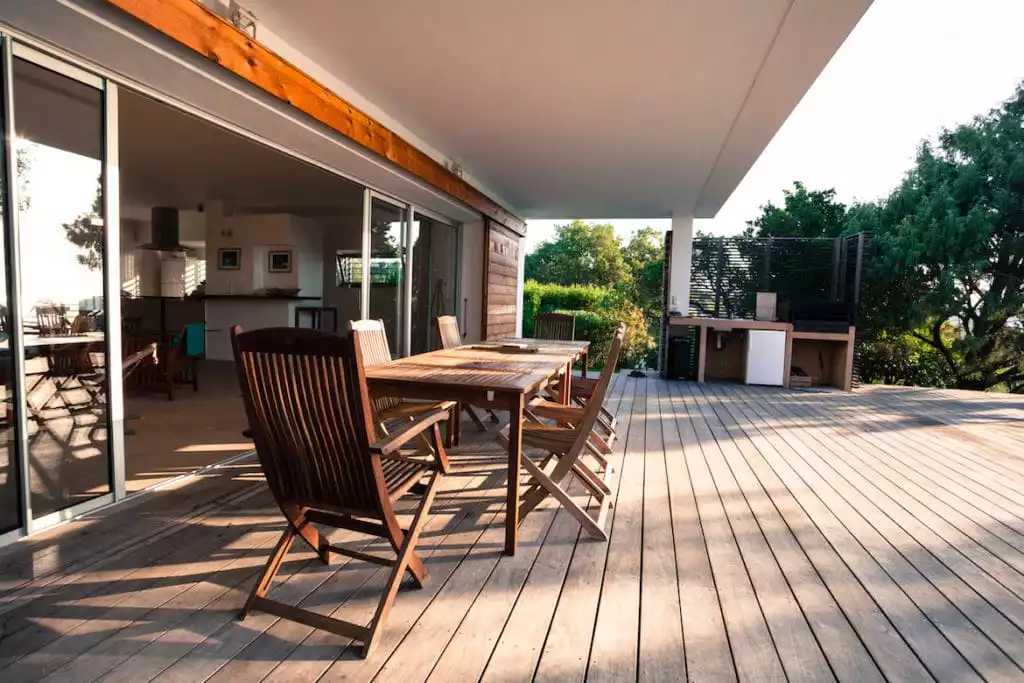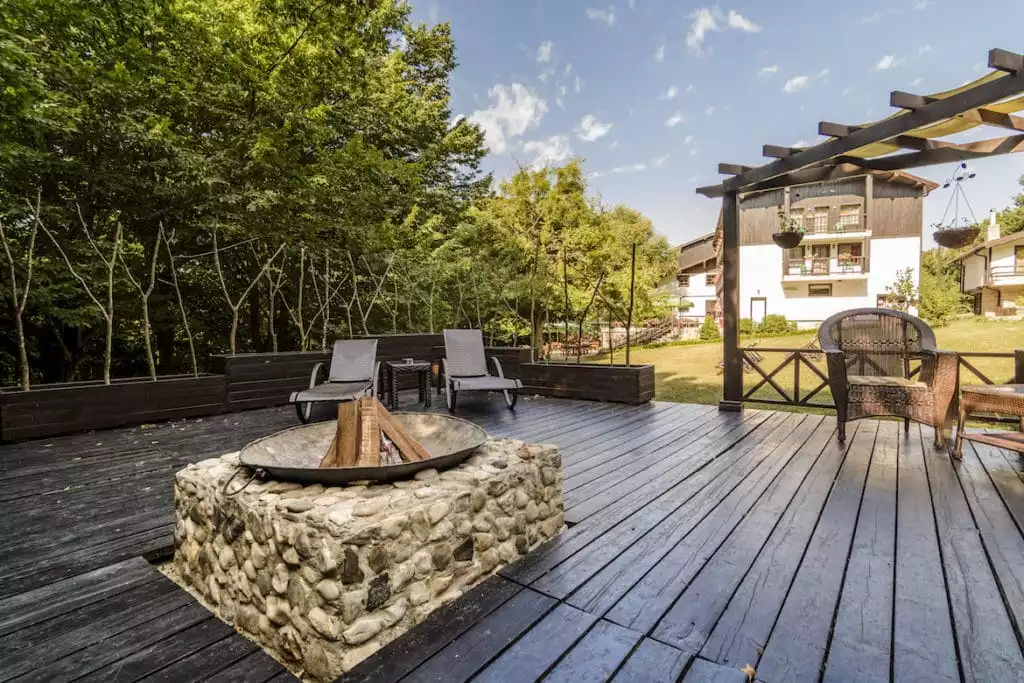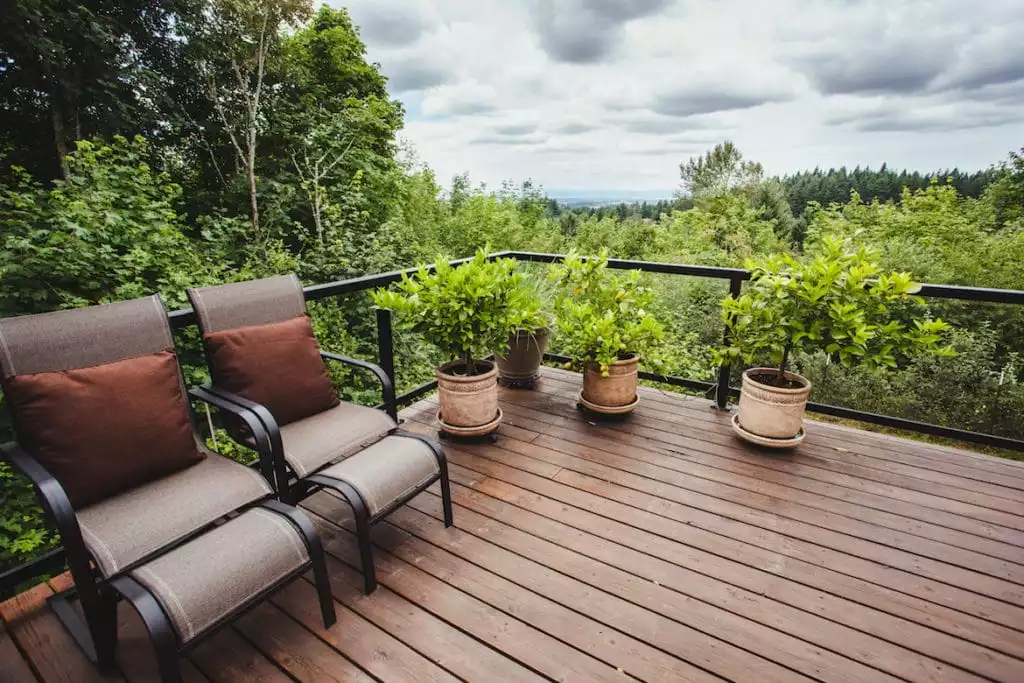
Myth 1: Wood Decks Are Hard to Maintain
All decks, whether made from wood or other materials, need to be cleaned periodically. Dirt particles, like carbon from car exhaust, settle onto virtually any horizontal outdoor surface. Over time, these particles make surfaces appear grimy and discolored. The good news is cleaning and sealing a wood deck is simple and easy. For more details on cleaning and sealing, check out this article.
The single most important thing about deck maintenance is to stay ahead of the game. Clean and seal the surface at regular intervals, before dirt has a chance to build up. Taking this approach will keep a wood deck looking its best and help ensure a long life.

Myth 2: Wood Decks Have Splinters
Wood can expand and shrink depending on the level of humidity in the air. This cycle is natural and can also occur when wood decks get wet from rain and then dry out from sun exposure. This repeated expansion and shrinkage can, over time, cause splintering.
A sealer applied to the deck periodically will significantly reduce this cycle, preventing cracks and splinters from developing in the first place. The sealer acts as a barrier, reducing the amount of water the wood absorbs and limiting its expansion and contraction.

Myth 3: Wood Decks Won’t Last
With regular cleaning and sealing, softwood lumber (pressure-treated pine, cedar, redwood) decks can last up to 20 years.
There a couple of things, however, that can shorten any deck’s life, regardless of the type of decking used.
One of those factors is a lack of proper care for a deck, which as mentioned above is easier than you think. A second factor is a lack of ventilation underneath a deck, which can cause a deck’s framing to rot out prematurely. Decks built close to the ground can have poor circulation resulting in the life of the support structure being cut by half or more. This is true regardless of whether the decking on top is wood or a manufactured material. The solution here, of course, is proper deck design and construction.

Myth 4: Lumber Is Not Eco-Friendly
Trees are highly beneficial to the environment since they have a unique ability to absorb carbon dioxide and generate oxygen. Amazingly, lumber and products made from wood store carbon within their structures and will continue to do so throughout their useful life.
Most North American forest products companies today are committed to sustainable harvesting and regenerating harvested trees promptly. In fact, harvesting affects only about 1.3% of all forest land in the U.S. annually and, at the same time, more trees are planted than harvested each year.
Many of the myths about wood probably come from a misunderstanding of its remarkable properties and performance characteristics. In fact, wood is nature’s ideal building material; it’s plentiful, easy to work and has an unbeatable strength. Wood has been used in home construction for thousands of years and there is every reason to believe it will only increase in popularity.|






